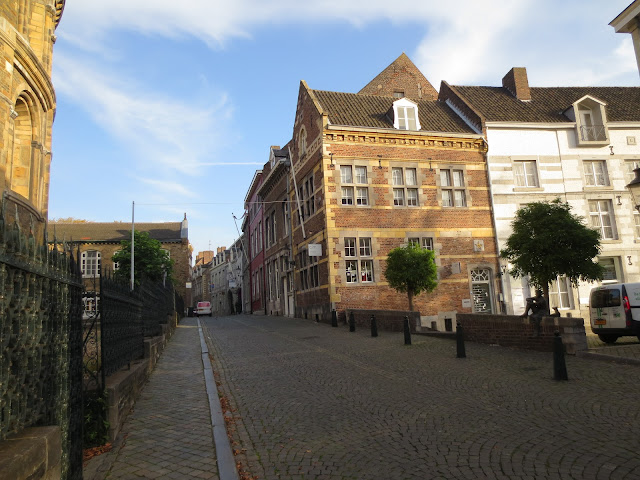Everyone has heard of Gouda Cheese, but have you heard of Gouda the city?
If not, this post is for you!
If so, good for you!
Hopefully this post will have a little something for everyone-- the Gouda educated and the Gouda ignorant.
Gouda (in Dutch pronounced: gutteral 'h'a-ow-dah) is more than cheese,
but let's get the cheese out of the way first.
This superbly creamy solid dairy may have the name of Gouda, but it might as well be called "Netherlands Cheese" because it is the cheese of choice and in reality it is made and sold all over The Netherlands.
Gouda can be found in many varieties, but the basics are: young = soft & white, middle aged = yellow & firm (see picture), aged = very hard & darker yellow. (For those interested our daily cheese is the middle aged.)
So why is it called Gouda (or in Dutch goudse) cheese?
Quick history lesson: The farmers around the city of Gouda developed and perfected the making of this creamy, smooth tasting cheese and then brought it to the big market in Gouda to sell it, and have been doing that for 300 years so the name Gouda kind of stuck.
The town hall. This is another of Gouda's claims to fame, but we didn't get any spectacular pictures of it due to the Saturday market that was crowding the town square.
Side view of the town hall. In The Netherlands it is customary to have your wedding in 2 places, you start out in the town hall for the legal proceedings and then move under a steeple for a blessing.
I thought that would be extremely bothersome until I got to see some of the city/town halls -- they're usually one of the best looking buildings in the city . . . now that idea doesn't sound so bad.
Standing tall and proud, this Gouda windmill brought to life the Dutch icon. In the picture it looks nice, in real life it was rather impressive, more of a historic beacon than historic icon.
Canals always make for lovely pictures.
Just a nice quiet little Dutch lane.
Me, in Gouda, with flowers because we were going to visit a co-worker for dinner and it's polite to bring flowers for the host.
Saab! It's Luke's old car in it's European context.
We don't miss driving or caring for a car, but it was fun to see this.









































